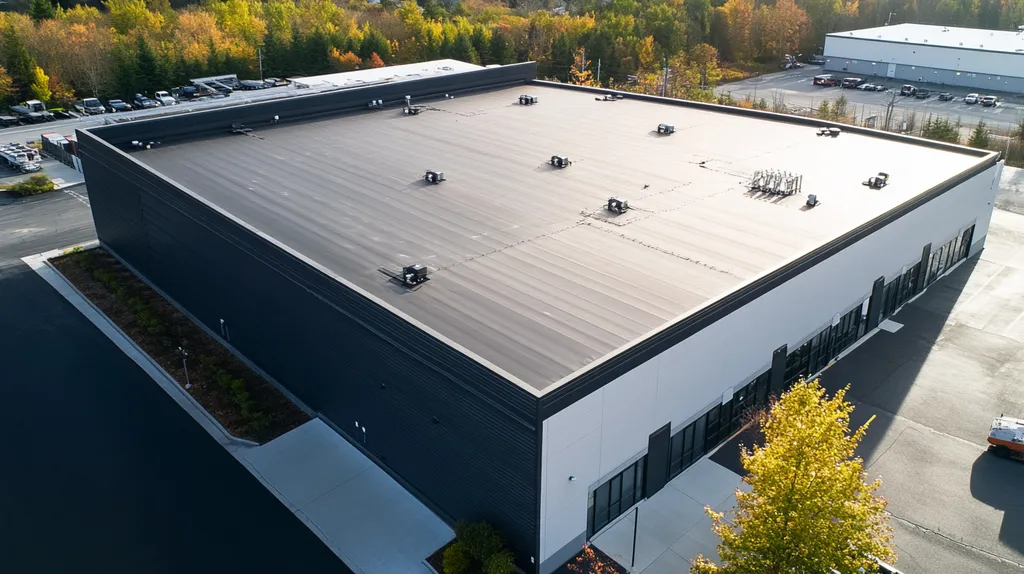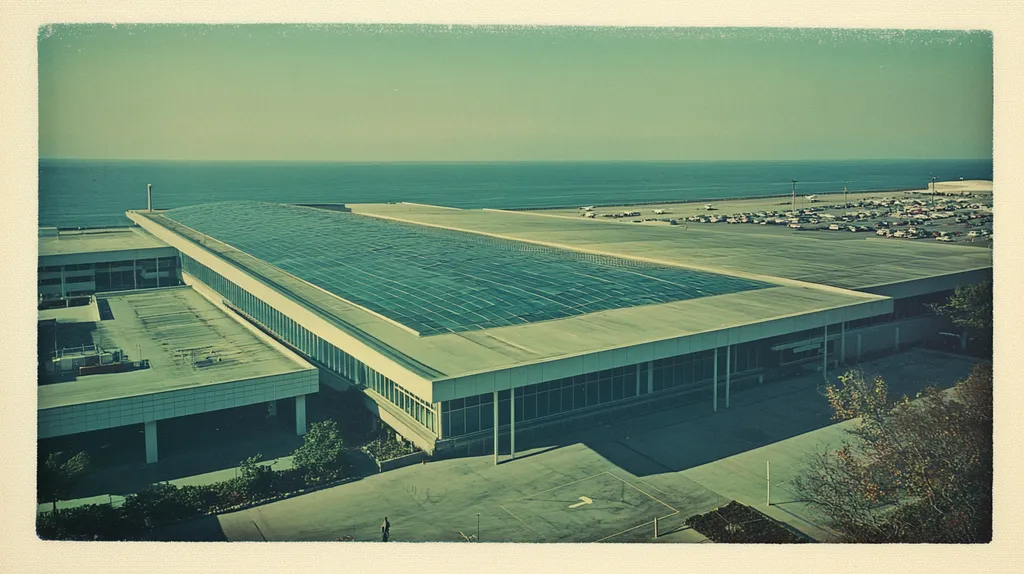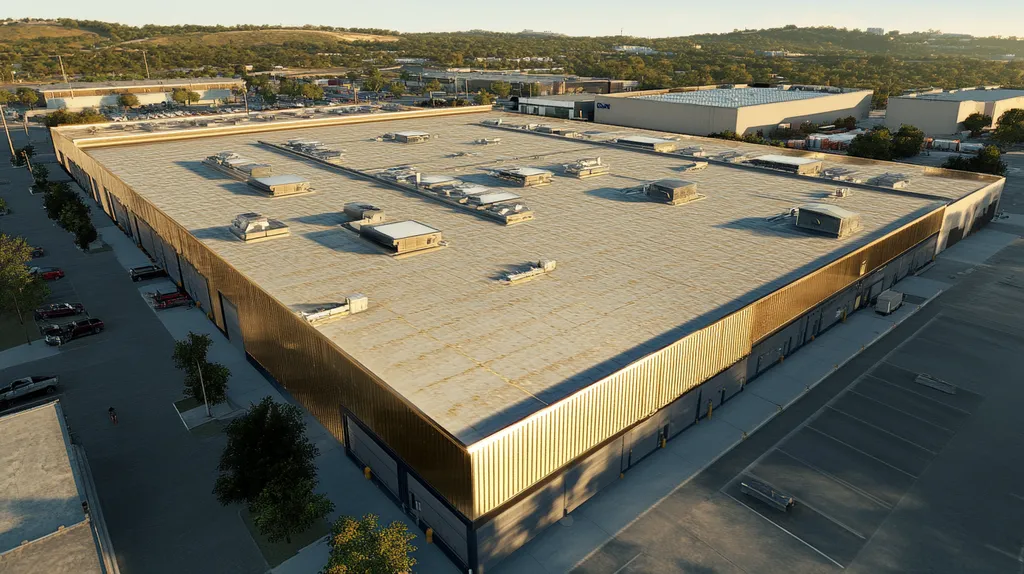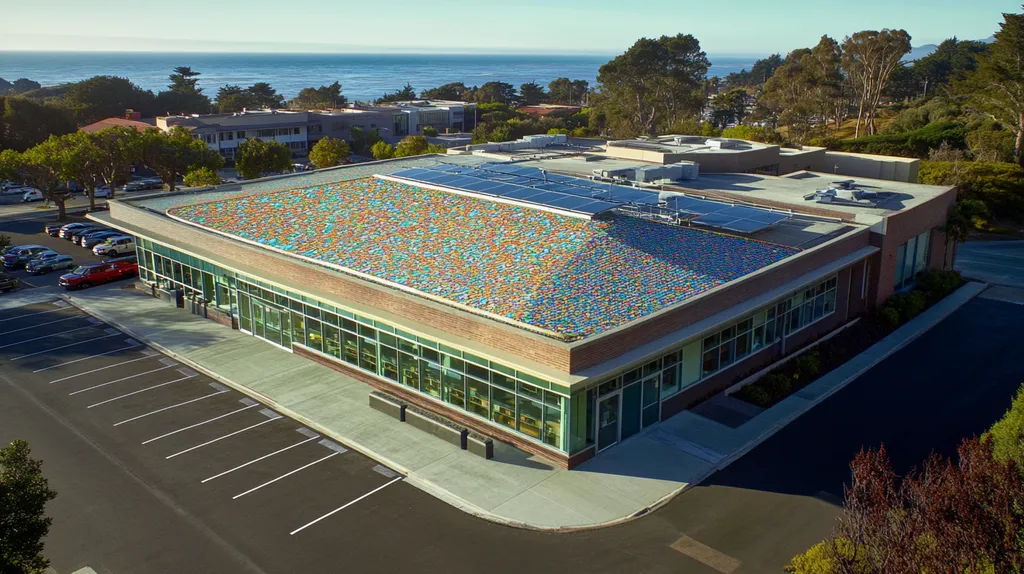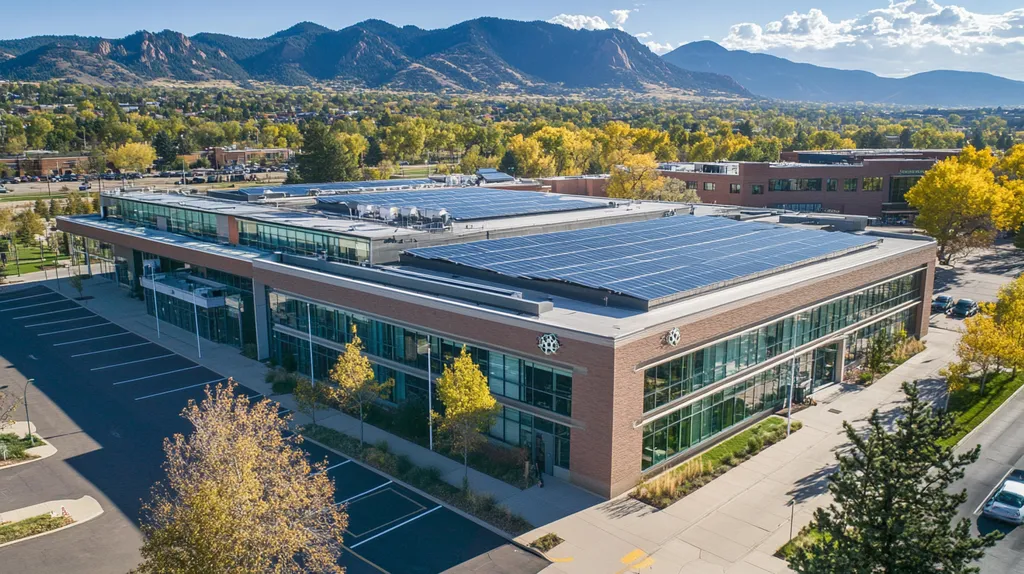Commercial property owners lose an estimated $3.3 billion annually to inadequate roof monitoring and delayed maintenance interventions. These losses stem from preventable water damage, structural issues, and reduced energy efficiency.
Smart technology solutions now offer unprecedented visibility into roof performance through IoT sensors, predictive analytics, and automated monitoring systems. Research shows properties leveraging these technologies reduce maintenance costs by up to 35% while extending roof lifespan by decades.
This comprehensive guide examines critical aspects of roof performance monitoring, from sensor implementation to compliance requirements, providing facility managers with actionable steps to protect their roofing investments.
SECTION 1: PERFORMANCE FACTORS
Ensuring effective roof performance is crucial for avoiding costly interruptions and protecting the integrity of commercial properties. Alarmingly, 20% of building owners encounter roof-related problems each year, which can lead to significant damage and operational delays. To combat these challenges, facility managers must harness the power of advanced monitoring technologies. This section highlights three essential performance factors: real-time monitoring with IoT sensors, data analytics for predictive maintenance, and environmental condition tracking.
Real-Time Monitoring with IoT Sensors
Real-time monitoring using Internet of Things (IoT) sensors is transforming how roofs are managed and maintained. These innovative sensors deliver instant data regarding vital roof conditions such as temperature, moisture levels, and structural integrity. By receiving immediate alerts, facility managers can proactively tackle issues before they escalate into major repairs.
For instance, sensors can immediately detect leaks, allowing for swift action that can prevent extensive water damage and costly repairs. Consistent monitoring also provides data that helps determine whether the roof is meeting its intended performance standards.
With ongoing monitoring, trends in roof performance become apparent. Facility managers gain important insights that enhance maintenance planning. This proactive approach not only prolongs the roof’s lifespan but also optimizes budget allocation for repairs.
Key Action Items
Data Analytics for Predictive Maintenance
Data analytics is essential for refining roof maintenance strategies. By examining historical performance data gathered from IoT sensors, facility managers can forecast when a roof will likely require repairs or replacement. This proactive maintenance approach minimizes unexpected failures and extends the roof’s lifespan.
For example, analytics can reveal trends in wear and tear that connect with specific environmental influences or building usage patterns. This information is vital for making informed decisions about when to schedule maintenance without disrupting day-to-day operations unnecessarily.
Utilizing advanced analytics tools also allows facilities to automate their maintenance schedules. Automation guarantees timely interventions, significantly reducing the potential for greater damage and related costs. Predictive analytics further aids in budgeting for forthcoming roof repairs.
Key Action Items
Environmental Condition Tracking
Tracking environmental conditions is crucial for ensuring optimal roof performance. Factors such as temperature changes, humidity, and snow accumulation can significantly impact roof health. Monitoring these conditions enables facility managers to adapt maintenance and operational strategies proactively.
For example, roofs located in snowy regions must be closely monitored for snow load to avert structural failure. Consistent updates regarding these conditions inform snow removal strategies, helping ensure roofs stay within safe operational limits.
Additionally, it’s vital to assess how surrounding elements—like trees or adjacent buildings—affect a roof’s exposure to environmental factors. Understanding these influences allows for more tailored maintenance plans that address specific site conditions.
Key Action Items
SECTION 2: FINANCIAL CONSIDERATIONS
Investing in smart technology for roof performance monitoring is not just a savvy move; it is a vital financial strategy. Many facility managers may overlook the substantial savings that come with predictive maintenance. Research indicates that proactive roof management can lead to significant cost reductions. By exploring these financial considerations, property owners can better protect their investments while enhancing operational efficiency.
Cost Savings Through Predictive Maintenance
Predictive maintenance, enhanced by smart technology, can significantly lower unexpected repair costs. Using real-time data analytics, facility managers can pinpoint potential issues before they escalate into expensive failures. Studies demonstrate that organizations employing predictive maintenance can reduce their maintenance expenses by up to 30%.
Moreover, traditional fixed maintenance schedules often result in wasted resources from unnecessary inspections. Smart monitoring facilitates targeted assessments based on actual roof conditions, ensuring that maintenance budgets are utilized effectively. This efficiency leads to improved resource allocation and capital management.
By cutting down on emergency repairs, businesses also minimize operational downtime. Proactive issue resolution supports uninterrupted operations, essential for customer satisfaction and revenue stability.
Key Action Items
Energy Efficiency and Reduced Utility Bills
Smart roof monitoring not only safeguards the building but also boosts energy efficiency. Integrated sensors can analyze thermal performance and detect insulation issues, leading to more effective energy use. A well-maintained roof can significantly lower energy consumption, resulting in reduced utility bills.
For instance, buildings using energy-efficient roofing technologies and smart monitoring have seen heating and cooling expenses cut by up to 25%. These savings not only enhance profitability but also align with sustainability efforts that resonate with customers and investors.
Additionally, adjusting maintenance approaches based on real-time energy insights can lead to even further reductions in energy spending. Facility managers can act quickly to implement changes that lower costs and improve overall building efficiency.
Key Action Items
Extended Roof Lifespan and Lower Replacement Costs
Utilizing smart technology for roof performance monitoring can lead to significantly longer roof lifespans. Continuous monitoring enables facility managers to make timely interventions that prevent extensive damage. Advanced systems can track the roof’s wear and assess when repairs are necessary, potentially extending lifespan by up to 50%.
A longer roof lifespan equates to lower replacement costs over the years. Facility managers leveraging smart monitoring are likely to save thousands of dollars by reducing the frequency of roof replacements and minimizing repair expenses. These accumulated savings enhance the value of initial technology investments.
Moreover, a prolonged roof lifecycle contributes to sustainability efforts, as it minimizes the materials required for replacements, benefiting both the organization economically and the environment by reducing waste.
Key Action Items
SECTION 3: COMPLIANCE REQUIREMENTS
Ensuring compliance with regulatory standards in commercial roofing is imperative for safeguarding safety, performance, and the longevity of roofing systems. Facilities that overlook these compliance requirements not only risk penalties but also jeopardize occupant safety and potentially drive up insurance costs. Understanding and adhering to these regulations is essential for effective roof performance monitoring. This section explores the key regulatory standards, building codes, and documentation requirements that facility managers must diligently navigate.
Regulatory Standards for Roofing Systems
Regulatory standards for roofing systems differ by location but are commonly shaped by guidelines set forth by organizations like the International Building Code (IBC) and local authorities. These regulations ensure that roofs can withstand various environmental factors including wind, snow, and rain. Non-compliance not only poses risks to building occupants but also exposes owners to possible legal consequences.
Beyond structural integrity, compliance dictates the use of materials that meet specific performance criteria, such as energy efficiency and sustainability standards. Adopting smart technology can enhance compliance efforts by offering real-time data on material performance. This proactive approach not only keeps roofs in line with regulations but also helps mitigate risks associated with inspections and fines.
Staying up-to-date on regulatory changes is crucial for facility managers. Technological advancements and environmental shifts often result in evolving requirements. By maintaining compliance, buildings become more marketable, as they demonstrate a commitment to safety and sustainability, which is increasingly appealing to tenants and buyers alike.
Key Action Items
Building Code Compliance and Inspections
Building codes outline the minimum construction and performance standards for roofing systems, addressing everything from materials to design and installation practices. Failing to meet these codes can result in severe repercussions, including costly repairs and legal liabilities.
To ensure ongoing compliance, routine inspections are essential. Facility managers should establish a regular inspection schedule that aligns with regulatory requirements and the specific maintenance needs of the roof. Not adhering to these timelines can lead to unanticipated repair costs and downtimes.
Smart technology can streamline compliance during inspections by identifying structural issues before they escalate. Advanced sensors provide both facility managers and inspectors with critical data, enhancing safety and efficiency during the inspection process. Regular engagement with local building codes is vital, and ongoing training ensures compliance requirements are met consistently.
Key Action Items
Documentation and Reporting Requirements
Thorough documentation and accurate reporting are pivotal in managing compliance for roofing systems. Facilities must maintain records of materials, inspections, and maintenance activities, demonstrating adherence to regulations while helping to identify potential future issues.
Regulatory agencies often mandate specific documentation, particularly following inspections or significant repairs. Failing to produce these records can lead to fines or additional penalties. Therefore, facility managers should develop a comprehensive documentation strategy encompassing all compliance-related data and ensuring readiness for upcoming inspections or audits.
Incorporating smart technology into the documentation process enhances both accuracy and efficiency. Automated digital platforms facilitate easy access to and updates of compliance documentation, reducing human errors and supporting timely reporting. Comprehensive records not only help meet compliance needs but also aid in informed decision-making regarding maintenance and upgrades.
Key Action Items
SECTION 4: RISK MANAGEMENT
Effective risk management in commercial roofing is essential, as undetected leaks or structural weaknesses can result in safety hazards, significant repairs, and property damage. A single leak can lead to overwhelming water damage that requires costly remediation efforts, sometimes amounting to thousands of dollars. To protect their properties, facility managers must prioritize identifying leaks, ensuring structural integrity, and enhancing safety practices.
Identifying Potential Leaks and Water Damage
Proactive monitoring technologies are vital for minimizing the risk of unexpected leaks in commercial roofs. By installing advanced moisture sensors, facility managers can obtain real-time data that alerts them to water accumulation before it becomes a serious issue.
These sensors operate continuously, identifying changes in moisture levels that may indicate leaks. When combined with a detailed maintenance schedule, they form a robust defense against water infiltration.
Regular inspections, enhanced by these technologies, ensure that any issues are quickly recognized. This combination of proactive monitoring and routine assessments helps save property owners from costly repairs and operational disruptions.
Key Action Items
Mitigating Structural Integrity Risks
Ensuring the structural integrity of a commercial roof is crucial for preventing severe safety hazards and unplanned repairs. Regular inspections can uncover issues such as sagging, cracking, and other distress signals.
Utilizing digital monitoring systems allows for the continuous evaluation of structural health. These systems can measure the load-bearing capacity of roofing components, notifying managers when interventions are needed.
Timely repairs can prevent structural problems from escalating, which pose risks to both occupants and property. For instance, a compromised roof may lead to partial collapses, endangering lives and assets.
Key Action Items
Safety Enhancements with Drone Inspections
Drone technology is transforming roof inspections, providing a safer and more efficient way to assess roofing conditions. Drones can quickly survey large areas and capture high-resolution images to pinpoint potential issues.
This approach reduces the need for personnel to access hazardous roofs, significantly lowering the risk of accidents. Traditional inspections often require ladders or scaffolding, which can expose workers to falls and injuries.
Drones equipped with infrared cameras can identify heat loss and moisture issues that are invisible to the naked eye, enabling facility managers to tackle problems before they escalate into major repairs.
Key Action Items
SECTION 5: OPERATIONAL PROCEDURES
Implementing effective operational procedures is essential for maximizing the lifespan and performance of commercial roofs. Routine inspections, coupled with smart technology, can identify issues early and save property owners significant amounts in repairs. Studies indicate that timely maintenance interventions can extend a roof’s life by as much as 30%. This section covers critical inspection checklists, smart sensor integration, and the importance of training for maintenance staff.
Routine Inspection Checklists and Protocols
Creating structured inspection checklists is essential for the upkeep of commercial roofs. These checklists should address vital elements like drainage systems, membrane integrity, and flashing condition. Conducting regular inspections—preferably quarterly—allows facility managers to catch potential issues before they grow into significant problems.
For example, research shows that minor roof leaks can cause an average of $23,000 in damage if left unattended. A detailed inspection protocol helps ensure all roof areas are checked systematically, enhancing operational efficiency.
Additionally, keeping thorough records of observations and maintenance needs facilitates better communication within maintenance teams. This documentation serves as a valuable resource for analyzing trends and predicting future roof issues, guiding proactive maintenance strategies.
Key Action Items
Integration of Smart Sensors into Maintenance
Integrating smart sensors into roof maintenance practices offers a transformative way to monitor roof performance. These sensors can track critical factors such as temperature, moisture levels, and structural changes in real time. Collecting extensive data allows for predictive analytics and timely maintenance interventions.
For instance, a facility equipped with moisture sensors can identify leaks before they cause visible damage. This proactive approach not only reduces emergency repair costs but also minimizes operational downtime, benefiting property management significantly.
Furthermore, smart technology can improve maintenance scheduling by providing insights based on historical performance data. Facility managers can anticipate when specific areas of the roof will require attention, optimizing resource allocation and labor costs.
Key Action Items
Training for Facility Maintenance Personnel
Comprehensive training programs for maintenance staff are essential to harness the full benefits of operational procedures. Proper training ensures that personnel understand the significance of inspections and can effectively utilize smart monitoring technologies. This knowledge empowers teams to identify issues early and take the necessary actions.
Training sessions should encompass how to interpret data from smart sensors, follow inspection protocols, and execute repair strategies. Familiarity with industry standards can further enhance maintenance practices and ensure compliance with regulations.
Facilities that prioritize training often report lower service interruptions and repair costs. An engaged and knowledgeable workforce can better navigate the complexities of managing commercial roofing systems.
Key Action Items
SECTION 5: OPERATIONAL PROCEDURES
Implementing effective operational procedures is crucial for maximizing the lifespan and performance of commercial roofs. Regular inspections combined with smart technology can identify issues early, saving property owners thousands of dollars in repairs. Research shows that timely maintenance can extend a roof’s lifespan by up to 30%. This section covers essential inspection protocols, the integration of smart sensors, and the importance of training for maintenance personnel.
Routine Inspection Checklists and Protocols
Establishing structured inspection checklists is essential for maintaining commercial roofs effectively. These checklists should encompass critical elements like drainage systems, membrane integrity, and flashing conditions. Ideally, conducting inspections quarterly allows facility managers to spot potential problems before they escalate into major issues.
For instance, studies indicate that what seems to be a minor roof leak can lead to an average of $23,000 in damage if left unaddressed. A detailed inspection protocol ensures that all roof areas are systematically checked, significantly improving operational efficiency.
Moreover, keeping thorough records of observations and maintenance requirements enhances communication among maintenance teams. This documentation serves as an invaluable resource for trend analysis and anticipating future roof issues, guiding proactive maintenance strategies.
Key Action Items
Integration of Smart Sensors into Maintenance
Incorporating smart sensors into roof monitoring offers a transformative approach to maintain roof performance efficiently. These devices can track important parameters such as temperature, moisture levels, and structural changes in real time. The expansive data they collect enables predictive analytics and timely maintenance interventions.
For example, facilities equipped with moisture sensors can detect leaks before any visible damage manifests. This proactive capability not only lowers emergency repair costs but also minimizes operational downtime, significantly benefiting property management.
Additionally, smart technology provides critical insights that can refine maintenance scheduling. By analyzing historical data, facility managers can anticipate when specific areas of the roof might require attention, thus optimizing resource allocation and labor costs.
Key Action Items
Training for Facility Maintenance Personnel
Investing in comprehensive training programs for maintenance staff is critical for maximizing the effectiveness of operational procedures. Proper training ensures that personnel understand the significance of inspections and can make effective use of smart monitoring technologies. This expertise empowers teams to detect issues early and take necessary actions.
Training sessions should cover interpreting data from smart sensors, following inspection protocols, and executing repair strategies efficiently. Familiarity with industry standards can further elevate maintenance practices, ensuring compliance and safety.
Facilities that prioritize training generally see a reduction in service interruptions and repair costs. An engaged and informed workforce is better equipped to navigate the complexities of managing commercial roofing systems.
Key Action Items
Moving Forward
The commercial roofing industry stands at a critical technological turning point, with smart monitoring solutions poised to revolutionize how facilities protect their $1.2 trillion in roofing assets.
Studies show that properties implementing comprehensive monitoring systems reduce maintenance costs by up to 35% while extending roof lifespans by decades.
From IoT sensors that detect leaks before water damage occurs to predictive analytics that optimize maintenance schedules, these technologies are becoming essential tools rather than optional upgrades.
As regulatory requirements tighten and energy efficiency standards evolve, facilities that delay adopting smart monitoring solutions risk falling behind both operationally and financially.
The future of commercial roofing clearly belongs to those who embrace data-driven, proactive approaches to performance monitoring and maintenance.
FREQUENTLY ASKED QUESTIONS
Q. What performance factors are crucial for a commercial roof?
A. Effective roof performance relies on real-time monitoring, predictive maintenance, and environmental tracking. Utilizing these factors helps facility managers address issues promptly and maintain the roof’s integrity.
Q. How can a commercial roof save money through predictive maintenance?
A. Predictive maintenance identifies issues early, reducing costly repairs and minimizing operational disruptions. By targeting maintenance based on actual conditions, property owners can significantly lower their overall maintenance expenses.
Q. What compliance requirements apply to industrial roofs?
A. Compliance with local building codes and regulatory standards is essential. Regular inspections and maintaining current documentation help ensure safety and adherence to legal requirements.
Q. What are the risks of neglecting a commercial roof’s maintenance?
A. Neglecting maintenance can lead to leaks, structural failures, and costly repairs. Identifying and addressing issues proactively is key to minimizing risks and preserving property value.
Q. How can operational procedures enhance roof lifespan?
A. Effective operational procedures like routine inspections and smart sensor integration help identify issues early, reducing significant repairs and extending the commercial roof’s lifespan.
Q. What training is needed for facility maintenance personnel?
A. Staff should be trained in inspection protocols, smart technology use, and compliance standards. Continuous training fosters accountability and efficiency in managing roof maintenance.
Q. How does weather impact commercial roof performance?
A. Weather conditions like temperature fluctuations, rain, and snow can significantly affect roof performance. Monitoring environmental factors allows for timely maintenance adjustments to mitigate weather-related damage.


